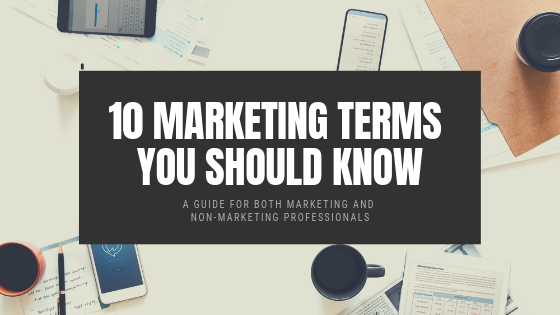10 Marketing terms you need to know
The world of marketing can be a complex realm for many people. It’s easy to get confused, especially when seasoned marketers are throwing around terms that might be foreign to you. The following terms can be helpful for many professionals, whether you’re freshly into your marketing career or an experienced executive looking to expand your marketing efforts.
1. B2B
This stands for Business-to-Business and is an adjective used to describe companies that sell goods or services to other businesses. Plaid Swan is a B2B organization because we help other businesses reach their customers or clients through marketing communication services, such as advertising, public relations, social media, and more.
2. B2C
B2C stands for Business-to-Consumer and is an adjective used to describe companies that sell directly to consumers. Perhaps you’re reading this blog on an Apple iPhone or wearing some Nike tennis shoes. Both Apple and Nike are B2C companies. Consumers purchase products directly from them.
3. Inbound Marketing
Inbound marketing refers to marketing activities that draw visitors in, rather than marketers having to go out to get the attention of potential consumers/clients. Inbound marketing is the practice of making your company easy to find online, as well as bringing your desired audience to your website to view your interesting and helpful content. By aligning your content with your customer’s interests, you will naturally attract inbound traffic.
4. Analytics
This is your company’s data. In the marketing universe, it’s important to look at the analytics of website traffic, social statistics, etc., and analyze the trends. From there, your company can develop actionable insights to make informed decisions. Analytics drive inbound marketing efforts.
5. Blogging
Blogging is a fairly popular term, and the term can refer to many different mediums today. However, it’s actually short for “web log.” Blogs can be personal platforms or used to represent a business, like this one. Blogs can contain basic information, photos, opinions, event summaries and more. Blogging is at the core of inbound marketing, as it can generate website traffic growth, thought leadership and leads.
Business blogging retains all the attributes of “regular” blogging and typically involves marketing strategy as well. One unique thing about business blogs is that it helps to position a company as an expert in their field, just like fashion blogs are reputable sources for the hottest trends and newest clothing choices. Business blogs are also typically actionable, leading readers to check out a video, leave a comment, or reach out for more information about the topic or the company’s services.
6. Editorial Calendar
An editorial calendar is essentially a set of directions for content creation. It includes information about which topics to cover, how often to publish, and exactly the day and time the content will be posted (especially in the case of social media). As with other calendars, they are designed to keep you organized and show any areas that may be lacking in your content library. It also keeps you on track with the topics you’re covering and helps avoid repetitive content.
7. Content and Context
These terms have been paired together because they go hand-in-hand. Content is a piece of information that exists for the purpose of being understood, engaged with, and ideally shared with others on social media platforms, blogs, articles, blogs, videos and more.
While posting valuable content is a necessity, ensuring that it’s customized for the right audience is equally important. For example, a social media post is going to reach a different audience than a column in a business newspaper, so using context appropriate for each different audience is important to make sure the correct message is received.
8. Landing Page
A landing page is a website page that contains forms or other data collecting strategies to be used for lead generation. Often times something is offered in exchange for lead information, such as a webinar or other resource.
9. Call-to-Action
Also referred to as CTA’s, these can be a text link, button, image, or some type of web link that encourages a website visitor to go to a landing page. Examples include: “Subscribe Now” or “Learn More.” CTA’s are beneficial for marketers because they entice a website visitor to go further, and ideally become a lead.
10. Rates
Clickthrough Rate
Also referred to as CTR, this is the percentage of your audience that clicks from one part of your website to the next. In terms of an equation:
Conversion Rate
The percentage of people who completed a desired action on a single web page, such as filling out a form or watching an entire video. Pages with high conversion rates are performing well, while pages with low conversion rates are performing poorly. In terms of an equation:
Bounce Rate
The percentage of people who land on a page on your website and then leave without clicking on anything else or navigating to any other pages on your site. A high bounce rate leads to poor conversion rates because no one is staying on your site long enough to read your content or convert elsewhere on your page. In terms of an equation:
Hopefully these 10 common terms are helpful to you in your marketing endeavors. However, this is not even the tip of the marketing term iceberg. For more great terminology like HTML, Key Performance Indicator, and Return on Investment, check out this awesome HubSpot page or reach out to our in-house experts to help you achieve your marketing goals.

